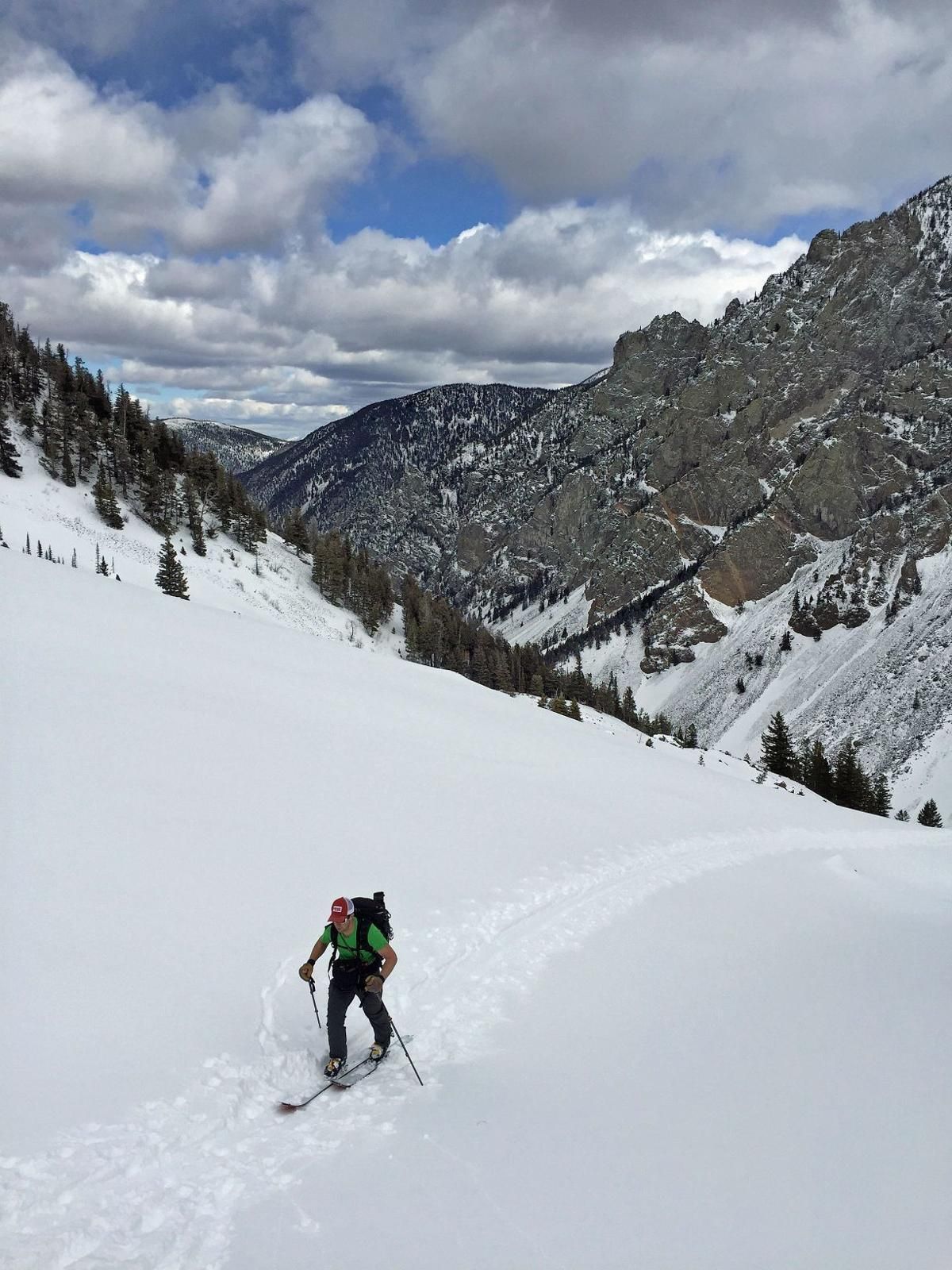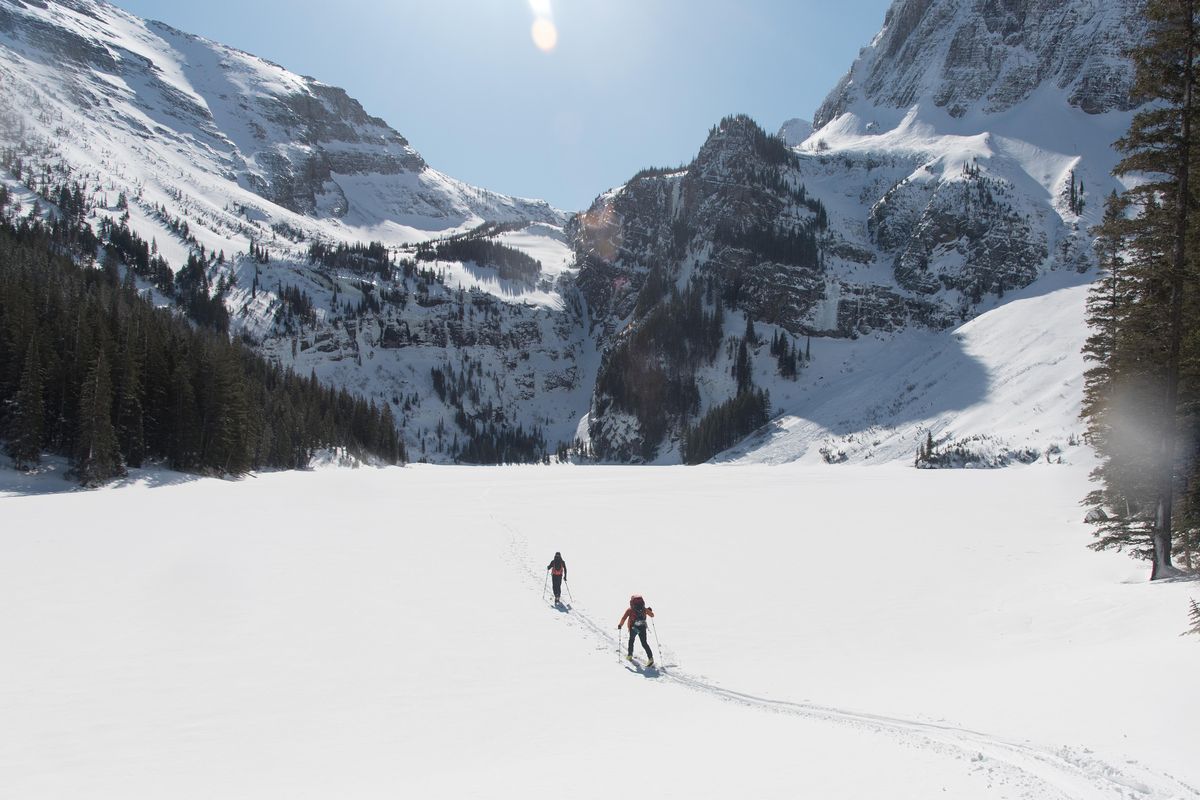Backcountry skiers, snowboarders displace wolverines, bighorn sheep in Montana’s backcountry
Backcountry skiers and snowboarders are pushing deeper into winter terrain, which can displace bighorn sheep and invade critical wolverine habitat. (Brett French / Billings Gazette)
BILLINGS – Wolverines and bighorn sheep have given humans an insight into winter backcountry use in Wyoming’s Teton Mountains – namely that the prime powder stashes that backcountry skiers and snowboarders like to poach will be shunned by wildlife.
“The habitat is avoided by animals,” said Kimberly Heinemeyer, who took part in the Round River Conservation Study of wolverines.
That study collected data on 24 collared wolverines during the course of six years by asking winter backcountry users to carry GPS devices with them when they trekked into the mountains. Via that information, the study documented more than 25,000 backcountry trips.
“The use is broader than we might have believed,” she said.
The data also gave the researchers insight into how deeply those skiers and snowboarders were penetrating into the backcountry, much farther than the investigators had initially believed.
A similar study of bighorn sheep in the Tetons began by documenting available winter habitat for the animals. So why, in the winter, were those animals only using about 70 percent of that region? It turns out backcountry skiers and snowboarders trekking into the mountains were displacing the animals, according to Aly Courtemanch, a biologist with the Wyoming Game and Fish Department.
“We found sheep wintering in areas with heavy use moved more,” Courtemanch said. “For a critter that has to survive in a harsh environment, that could affect your survival.”
When the information was provided to the local skiers and snowboarders, Courtemanch said the recreationists were receptive.
“We have to come together and find collaborative and creative solutions that balance these needs,” Heinemeyer said.
It’s a theme that Sarah Reed, of the Wildlife Conservation Society and a professor at Colorado State University, has been promoting for more than 17 years. But for most of that time she said she felt like she was laboring in anonymity because it was a discussion that the conservation community did not want to initiate.
“Conservation success really depends on the assumption that recreation and conservation can coexist,” she said.
But research tends to show the opposite. Out of 274 research articles reviewed, Reed said that 97 percent documented effects on wildlife; two-thirds of those effects were negative. Studies on hiking vs. motorized recreation showed that wildlife were more disturbed by hikers.
“For many, it is counterintuitive,” she said.
Reed sees solutions but only if they are applied across management boundaries on a larger scale. Recreationists can also help simply by minimizing noise or cleaning up trash.
“What we don’t want to do is polarize this issue,” Heinemeyer said.
All recreationists need to form a united front, she added. Unfortunately, building a coalition is not an easy task.
One successful way to spread the message may be the use of celebrities, Courtemanch said.
“Peer pressure is very effective,” she said. “We have a lot of celebrity skiers. If we can get them to share what to do, it could be powerful.”

